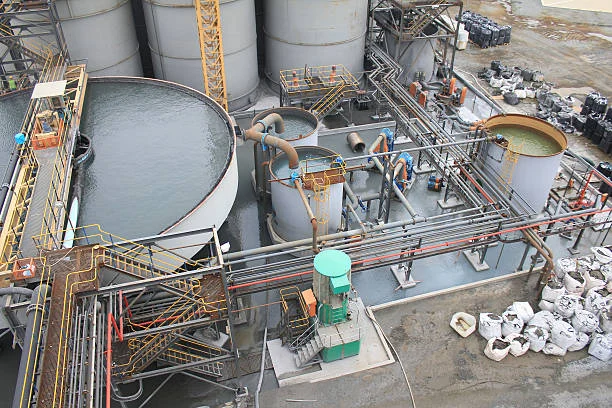
Sodium cyanide is a highly toxic chemical widely used in various industries, including mining, electroplating, and chemical synthesis. Workers in these industries are at risk of occupational exposure to Sodium cyanide, which can have severe short - term and long - term health consequences. This blog post focuses on the long - term health risks associated with such exposure.
How Sodium Cyanide Affects the Body
Sodium cyanide's toxicity is primarily due to the release of cyanide ions (CN⁻). Once in the body, these ions have a high affinity for iron in cytochrome oxidase, an enzyme crucial for the electron transport chain in cells. By binding to the iron in cytochrome oxidase, cyanide inhibits the enzyme's function, disrupting the normal flow of electrons and preventing cells from using oxygen effectively. This leads to a state of cellular asphyxiation, where cells are starved of oxygen even when there is an adequate supply in the bloodstream.
Long - Term Health Effects
Neurological Damage
Cognitive Impairment: Long - term exposure to Sodium Cyanide has been linked to cognitive decline. Workers may experience difficulties with memory, concentration, and learning. For example, studies on workers in gold - mining operations that use cyanide in the extraction process have shown that those with chronic exposure are more likely to have problems recalling information and performing complex mental tasks compared to their unexposed counterparts.
Peripheral Neuropathy: Cyanide can damage the peripheral nerves, resulting in symptoms such as numbness, tingling, and weakness in the extremities. In some cases, this can progress to muscle atrophy and problems with coordination. Workers may notice a loss of sensation in their hands and feet, making it difficult to perform fine - motor tasks or maintain balance.
Seizure Disorders: Survivors of significant cyanide exposure may develop seizure disorders. The disruption of normal brain function due to long - term exposure can lower the seizure threshold, making individuals more prone to sudden, involuntary convulsions.
Cardiovascular Complications
Heart Muscle Damage: Prolonged exposure to sodium cyanide can lead to damage of the heart muscle, or cardiomyopathy. This can weaken the heart's ability to pump blood effectively, resulting in symptoms such as fatigue, shortness of breath, and swelling in the legs and ankles. Over time, it may progress to heart failure.
Arrhythmias: Cyanide can also disrupt the normal electrical activity of the heart, leading to abnormal heart rhythms or arrhythmias. These can range from mild, such as occasional palpitations, to life - threatening ventricular arrhythmias that can cause sudden cardiac arrest.
Respiratory System Issues
Chronic Obstructive Pulmonary Disease (COPD) - like Symptoms: Workers exposed to sodium cyanide over the long term may experience symptoms similar to COPD, including persistent cough, shortness of breath, and wheezing. The irritation and damage to the respiratory tract caused by repeated exposure can lead to inflammation and scarring, narrowing the airways and reducing lung function.
Increased Susceptibility to Respiratory Infections: The compromised respiratory system of those exposed to cyanide is more vulnerable to infections. Bacterial and viral respiratory infections can occur more frequently and may be more severe, leading to longer recovery times and potential long - term damage to the lungs.
Other Health Concerns
Vision and Hearing Loss: There are reports suggesting that long - term cyanide exposure may be associated with vision and hearing problems. Cyanide - induced damage to the nerves and blood vessels in the eyes and ears can lead to progressive loss of sight and hearing over time.
Reproductive and Developmental Effects: In some cases, cyanide exposure has been associated with reproductive problems. In animal studies, exposure to cyanide has been linked to reduced fertility, increased risk of miscarriage, and developmental abnormalities in offspring. Although more research is needed to fully understand the extent of these effects in humans, it is a significant concern for workers of child - bearing age.
Prevention and Mitigation
Given the serious long - term health risks associated with occupational exposure to sodium cyanide, prevention is crucial. Employers should implement strict safety measures, including providing appropriate personal protective equipment (PPE) such as respirators, gloves, and protective clothing. Regular workplace monitoring for cyanide levels is essential to ensure that exposure limits are not exceeded. Additionally, workers should receive comprehensive training on the proper handling of sodium cyanide, emergency response procedures in case of exposure, and the importance of following safety protocols.
In conclusion, the long - term health risks of occupational exposure to sodium cyanide are significant and wide - ranging. Workers in industries that use this toxic chemical must be aware of these risks, and employers have a responsibility to protect their employees through proper safety measures and monitoring. Early detection of exposure and prompt medical intervention can also play a role in minimizing the long - term health impacts.
- Random Content
- Hot content
- Hot review content
- Chromates / Potassium Dichromate 99.5%
- Lead nitrate 99%
- ENVIRONMENTAL MANAGEMENTSYSTEM CERTIFICATE
- High-strength Shock tube(VOD≧2000m/s)
- Feed Grade 98.0% Calcium Formate
- Sodium sulphate 99% Pharmacy Grade
- 2-Hydroxyethyl acrylate (HEA)
- 1Discounted Sodium Cyanide (CAS: 143-33-9) for Mining - High Quality & Competitive Pricing
- 2Sodium Cyanide 98% CAS 143-33-9 gold dressing agent Essential for Mining and Chemical Industries
- 3Sodium Cyanide 98%+ CAS 143-33-9
- 4Anhydrous Oxalic acid 99.6% Industrial Grade
- 5China's New Regulations on Sodium Cyanide Exports and Guidance for International Buyers
- 6Oxalic acid for mining 99.6%
- 7Reagent Grade/Industrial Grade Hydrochloric Acid min.31%
- 1Sodium Cyanide 98% CAS 143-33-9 gold dressing agent Essential for Mining and Chemical Industries
- 2High Quality 99% Purity of Cyanuric chloride ISO 9001:2005 REACH Verified Producer
- 3 High-Quality Sodium Cyanide for Leaching
- 4Powdery emulsion explosive
- 5Industry Grade Electron grade 98% Sulfuric Acid H2SO4 Sulphuric Acid Battery Acid Industrial Sulfuric Acid
- 6Colloidal emulsion explosive
- 7sodium hydrosulfide 70% flakes used Mining Industry












Online message consultation
Add comment: